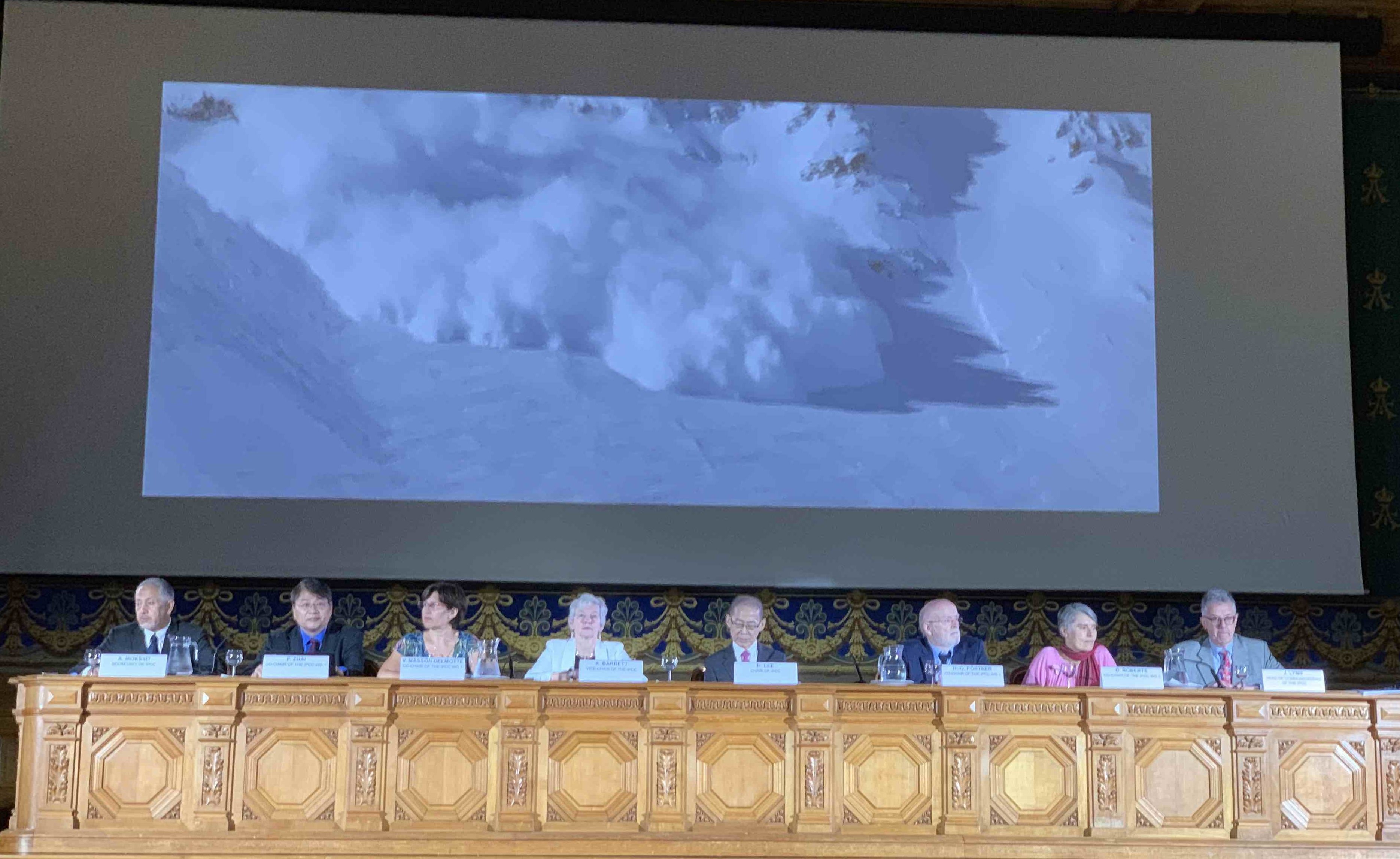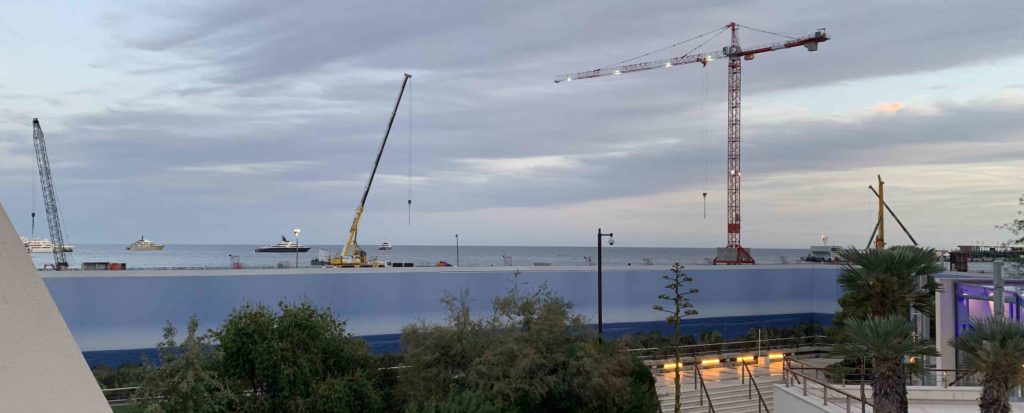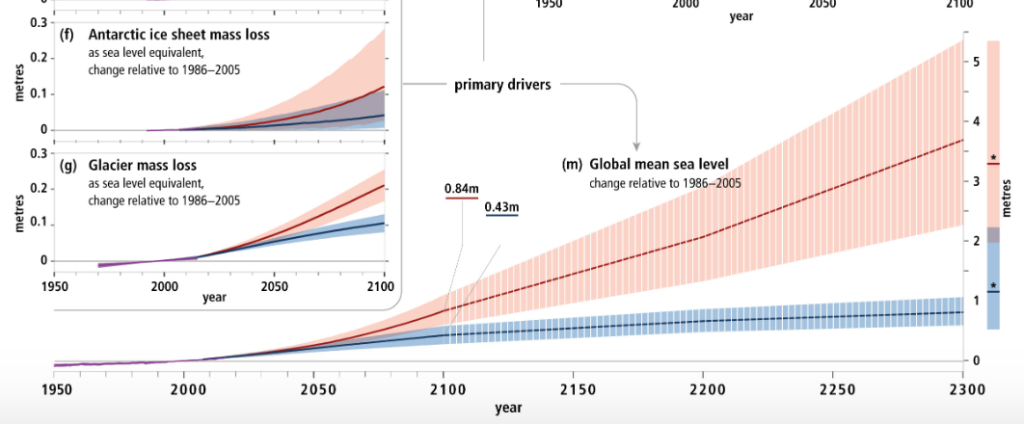
The world faces a stark choice about sea level rise, leading climate scientists said on Wednesday.
Make drastic cuts in global greenhouse gas emissions in coming years and sea levels are likely to gain by about a metre by 2300. That’s already bad enough, but fail to act and they could rise by a catastrophic five metres by 2300.
About 680 million people, about a tenth of the world’s population, now live close to sea level. A fast rise in ocean levels, driven by a quickening thaw of Antarctica and Greenland, would make low-lying island states and many coastal regions uninhabitable.
And it would cost a fortune to defend cities from New York to Shanghai, from London to Buenos Aires.

The Intergovernmental on Climate Change, in its Special Report on the Oceans and Cryosphere in a Changing Climate released in Monaco, says global sea levels are likely to rise by 43 centimetres this century if the world makes deep cuts greenhouse gas emissions, and by about a metre by 2300 (below – blue projection in main graph)
But keep up current trends of rising emissions and they are likely to rise by 84 cms by 2100, and by up to an enormous 5.4 metres by 2300. (red)

Adapting to a fast rise in sea levels would be enormously expensive – the IPCC estimates “tens to several hundreds of billions of US$ per year”.
It adds:
“While such investments are generally cost efficient for densely populated urban areas, rural and poorer areas may be challenged to afford such investments with relative annual costs for some small island states amounting to several percent of GDP.”
The report also outlines an alarming list of threats to the oceans – more underwater heat waves, dying corals, dwindling fish stocks, acidification of the oceans. A thaw of ice would cause damage from polar ice sheets to high mountain glaciers of the Himalayas – vital to irrigate crops for hundreds of millions of people in Asia.
The obvious solution: cut greenhouse gas emissions by building on pledges already made as part of the 2015 Paris Agreement.
Hoesung Lee (seated centre in main photo at top) chair of the IPCC, expressed worries that the world may be losing the race against climate change. “We need to take immediate and drastic action to cut emissions right now,” he said.

I am an experienced geologist so I don’t heed IPCC scare stories. Gilluly (1937, p. 440-441) estimated that all the water in the ocean could have been derived from the escape of 5.8 per cent of water from the sialic rocks of the crust. Compared with water coming from volcanoes, hot springs and hot smokers, any climate-induced contribution to rising sea level by melting ice is trivial.
Gilluly, James (1937) The water content of magmas, Am. Jour. Sci., 5th ser., vol. 33. p. 430-441.
Thanks Donal – many of the IPCC authors are the top scientists in their fields – not likely to make up scare stories that could easily be debunked. In 1937 there were no satellites, etc to monitor what’s going on in the oceans and ice sheets … Antarctica holds enough ice to raise sea levels by almost 60 metres if it ever all melted (it won’t, but it’s losing mass at the fringes) and Greenland another seven – hardly trivial. How might Gilluly explain a rise in average global sea levels of 16 cms in the last century – some unknown effect of sialic rocks? I think the IPCC is more convincing – and you can see water pouring into the ocean as ice melts with temperatures up about 1 degree Celsius over pre-industrial times. Here’s today’ report: https://report.ipcc.ch/srocc/pdf/SROCC_SPM_Approved.pdf
Alister —Just received your “Antarctic glacier once retreated at breakneck 50 metres a day’ .
The geographer Julian Dowdeswell has been pushing his ideas about the effects of the tide on glaciers in dozens of papers since at least 1989 so there is not much new here. I have only seen the
summary in Science but you mention parallel seabed imprints of the glacier’s grounding line at low tide to the rungs on a giant ladder, about 20 to 25 metres apart, giving a daily retreat of 40 to 50 metres.” It seems to me that a more likely explanation of parallel marks is sinking of the seabed, caused by sedimentary isostasy. If it were a tidal effect the ‘rung’, spacing would vary between spring and neap tides.